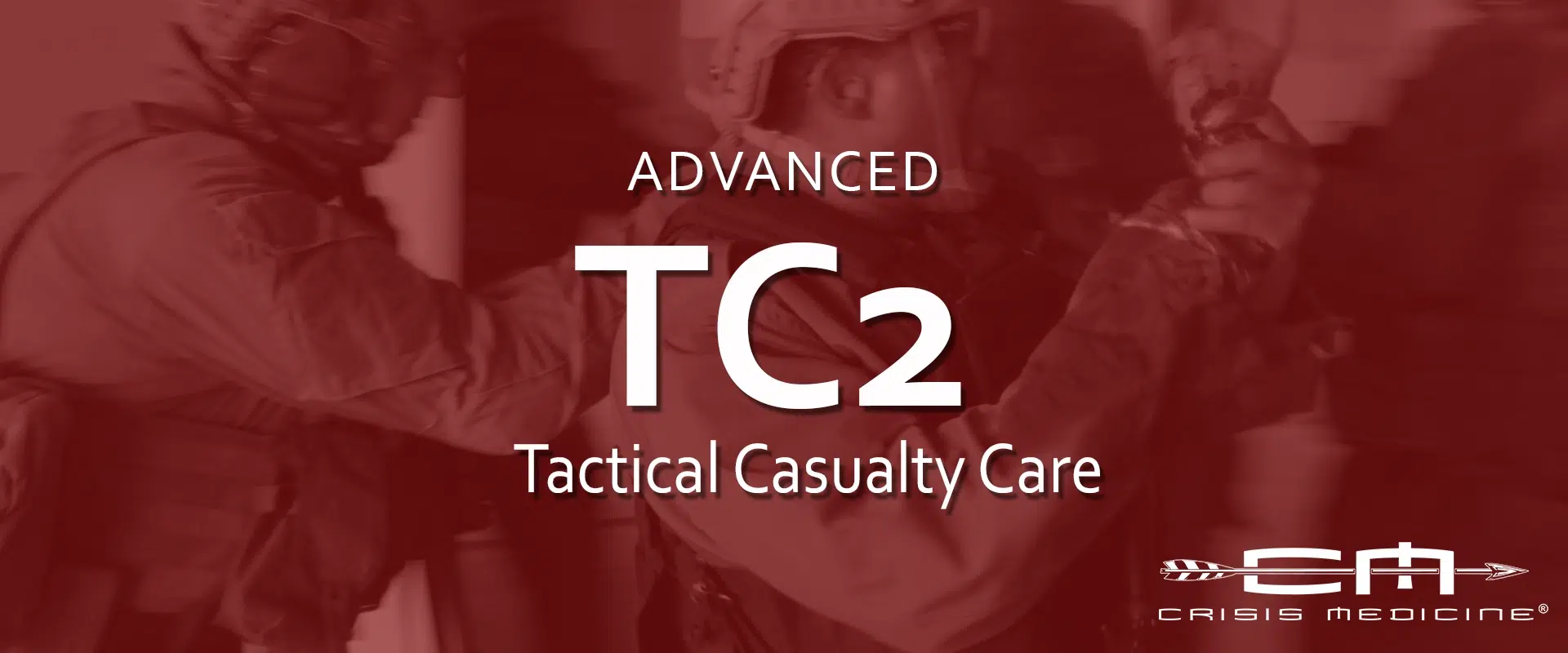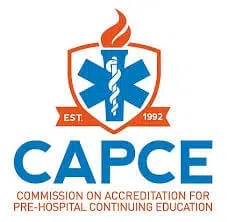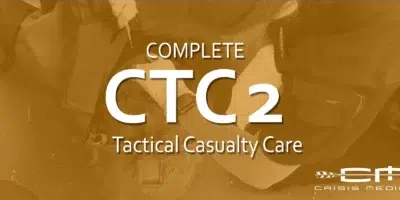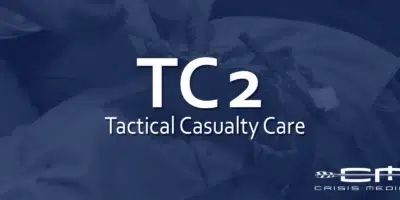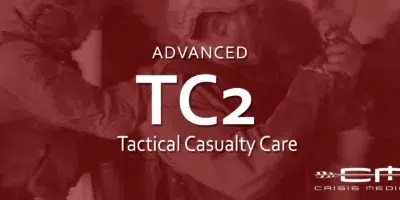Advanced Tactical Casualty Care
This dynamic and practical thirty-hour course covers the evaluation and treatment of the tactical casualty during the Care Under Fire / Direct Threat and Tactical Field Care / Indirect Threat phases. This stand-alone course covers all the materials presented in the Tactical Casualty Care Course and builds upon that with additional hemorrhage control skills, recognition, and management of tension pneumothorax, practical airway devices, additional hands-on skills stations, and much more extensive practical exercises.
The entire third day of class is scenario-based with students conducting multiple casualty evaluations in a tactical environment. This class is consistent with current Tactical Combat Casualty Care guidelines as well as the guidelines for Tactical Emergency Casualty Care.
The Advanced TC2 course covers everything in TC2:
The nature and myths of gunshot wounds and realities of their medical management
How to rapidly evaluate injuries and how they affect your tactical treatment plan
The concept of “care under fire” and how it differs from a non-tactical medical situation
Assessment and management of penetrating, blunt, and blast injuries
Assessment and management of massive hemorrhage
The safe and efficient use of improvised and commercially available tourniquetsBasic airway and breathing assessment, as well as management within a high risk environment
Techniques for moving casualties to a safer location
And the Advanced TC2 Course adds the following topics and skills:
Choosing appropriate medical care for each treatment phase
Extensive practical exercises managing all types of hemorrhage, including junctional hemorrhage, effectively packing wounds, and hemostatic agents
Nasal Pharyngeal Airways and airway positioning
In-depth discussion of thoracic trauma (chest injuries), chest seals, recognition of tension pneumothorax and its decompression
Appropriate treatment of casualties with abdominal injuries and head injuries
Casualty hypothermia prevention
Detailed training and practice moving casualties efficiently
Triage of multiple casualties and setting up a Casualty Collection Point
Tactical casualty care concepts and their application
This course is about 50% dynamic presentation including photos, videos, and real-life examples, and 50% practical exercise, student hands-on, and scenarios
If you carry a firearm and an Individual First Aid Kit this course will show you what should be in your kit, what you should take out, and how to most efficiently use everything around you.
For the three-day course, we have extensive practical scenarios which utilize trained casualty role players, blank fire, and profuse quantities of theatrical blood. During skills stations and preliminary scenarios, students take turns role-playing a casualty, having tourniquets applied, as well as begin drug and lifted. As such, it is advisable not to wear your finest clothing. During the scenario day, students will get fake theatrical blood on them (which can lightly stain skin for 24-hours and can stain gear or clothing permanently).
Bring all issued tactical gear and BDU-type uniforms that are acceptable to get fake blood on. This course can be physically demanding due to carrying casualties and performing simulated tactical operations so be physically prepared for this prior to course attendance.
No prior medical knowledge or training is necessary to attend.
Note, prices are for courses taught in the greater Portland, Oregon. Courses taught elsewhere may have additional costs for travel, gear shipping, etc. In-Person course cancellation must be made more than two weeks (14 days) before course start date in order to obtain a refund.
ALL IN-PERSON REGISTRATIONS ARE SUBJECT TO APPROVAL. YOU WILL BE NOTIFIED VIA EMAIL WHEN YOUR COURSE REGISTRATION IS CONFIRMED. IF YOU ARE NOT ADMITTED TO THE COURSE, YOU WILL RECEIVE A FULL REFUND.
For in-person courses, refunds will not be issued if cancellation is made without two weeks’ notice ahead of the class start date.
CAPCE Accredited Provider
This CE activity is accredited for 30 Advanced CEH* by Crisis Medicine, an organization accredited by the Commission on Accreditation for Prehospital Continuing Education.
*The course runs 3 ~10-hour days, minus an hour for lunch each day. Students will be provided an online-module as pre-course work which, if completed, will be an additional 1.5 hours of CEH.
Course Features
- Lectures 19
- Quizzes 0
- Duration 30 hours
- Skill level All levels
- Language English
- Students 509
- Certificate Yes
- Assessments Yes

